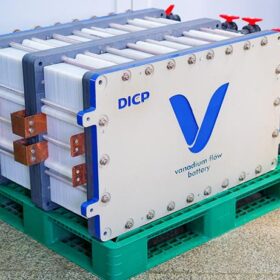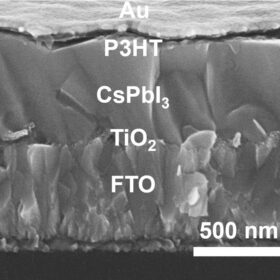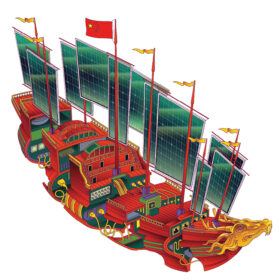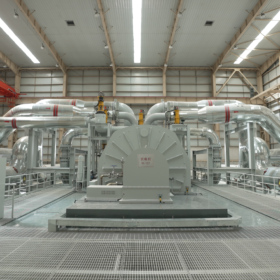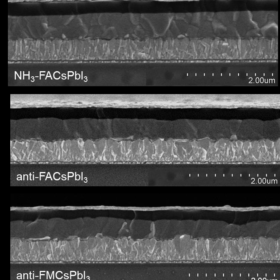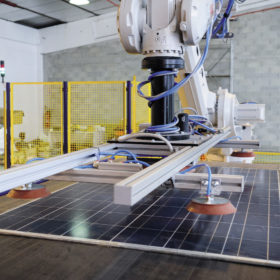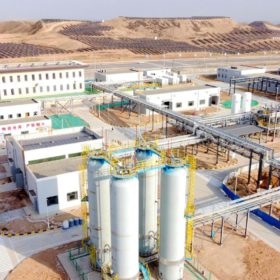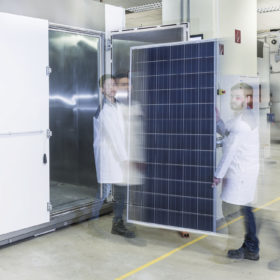Weekend Read: A battery worth its salt
While lithium ion battery prices are falling again, interest in sodium ion (Na-ion) energy storage has not waned. With a global ramp-up of cell manufacturing capacity under way, it remains unclear whether this promising technology can tip the scales on supply and demand.
Chinese researchers develop high power density vanadium flow battery stack
Researchers at the Dalian Institute of Chemical Physics (DICP) in China have developed a 70 kW-level vanadium flow battery stack. The newly designed stack comes in 40% below current 30 kW-level stacks in terms of costs, due to its volume power density of 130 kW/m3.
Black perovksite solar cell achieves 20.25% efficiency
The Chinese Academy of Sciences has developed a black perovskite solar cell that reportedly achieved the the highest efficiency ever reported for PV devices built with this perovskite material and a dopant-free hole transport layer based on the P3HT polymer. The cell was also able to retain around 93% of its original efficiency after continuous illumination for 570 h.
Weekend Read: China’s solar century
From zero to hero in 20 years, China’s PV industry has undergone an extraordinary journey. Vincent Shaw considers the reasons for the nation’s solar success and the challenges ahead.
World’s largest salt cavern compressed air storage project breaks ground
Construction has started on a 350 MW/1.4 GWh compressed air energy storage project in Shangdong, China.
Healing defects with ammonia for a 23.21% efficient perovskite solar cell
Scientists in China demonstrated a process to “heal” defects in a perovskite film by using an ammonia treatment after the film is formed through a solvent process. Small solar cells made using these films achieved maximum efficiency of 23.21%, while a mini-module with a 14-square-centimeter active surface area reached 20.61%.
Recycling process promises ‘better than new’ silicon wafers
Scientists in China have developed a new recycling process for PV modules that can recover intact silicon cells from end-of-life products, and process them back into wafers. As part of the recycling process, the wafers are purified and surface-treated, making them suitable for integration into new, high-efficiency cells and modules.
China dominates transport fuel-cell patents
The World Intellectual Property Organization says China accounted for 69% of the patents filed for transport-related fuel-cell tech in 2020, with road transport significantly dominating applications.
China’s ‘Liquid Sunshine’ project demonstrates PV powered methanol
A pilot project in China was brought online this month, combining 10 MW of PV with electrolyzers for hydrogen production and carbon dioxide hydrogenation to synthesize methanol. The methanol is supplied to the chemical industry, or can be converted back into hydrogen for energy use. And the project’s creators say their next goal is scaling the project up to 10 or even 100 times its current size.
Scratching the surface of LeTID
The mechanisms behind light-elevated temperature-induced degradation are still not fully understood, but it is known to cause significant performance losses for modules in the field. Scientists in China are investigating the causes of the phenomenon, and are currently focused on the surface of the materials and the interfaces between the silicon and passivation layers.

